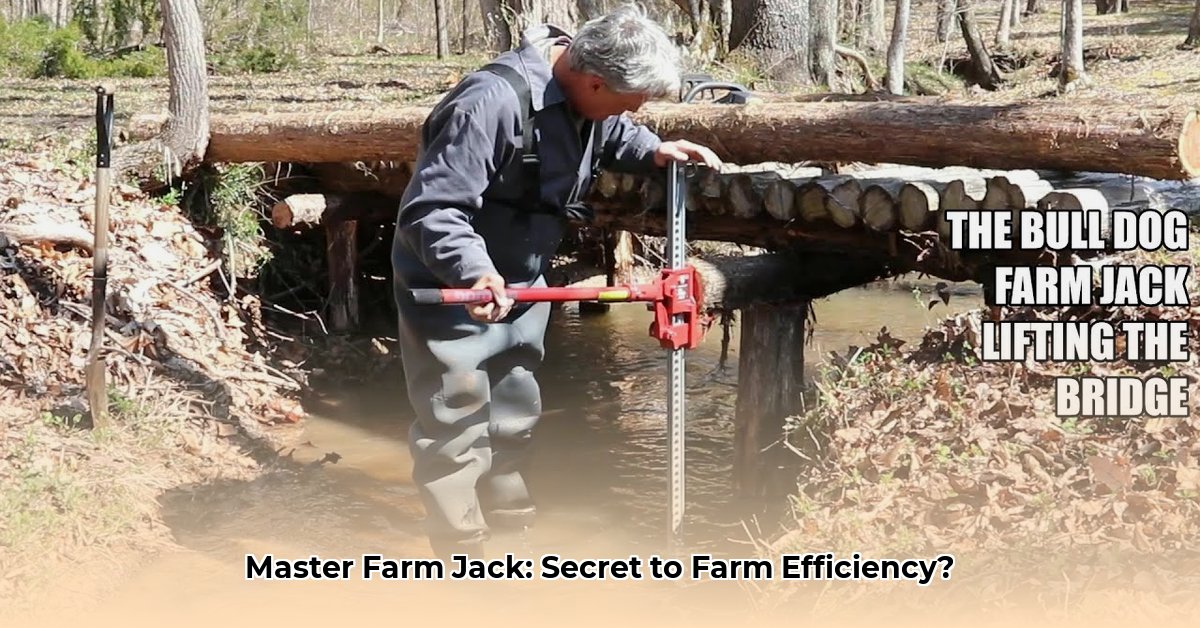
Farm Jack Tractor Supply: Your Guide to Safer, More Efficient Farming
Farm jacks, while seemingly simple tools, are essential for efficient and sustainable farming. This guide focuses on selecting, using, and maintaining farm jacks from Tractor Supply, highlighting their contribution to a more environmentally responsible operation. Proper jack usage directly impacts farm profitability and environmental stewardship. For safe delivery information on your order, check out Tractor Supply Delivery.
Choosing the Right Farm Jack: A Tailored Approach
Selecting the appropriate farm jack depends on your specific needs. Tractor Supply offers a range of options, from lighter models for smaller equipment to heavy-duty jacks for tractors and other large machinery. Consider the weight of your equipment, accessibility of lift points, and usage frequency. A Bulldog jack might suffice for minor repairs, while a heavier-duty model is necessary for lifting heavier equipment. Budget considerations are also important; heavier-duty jacks offer greater capacity and durability but come at a higher cost. A well-chosen jack minimizes the risk of accidents and speeds up repairs. Do you often work with large equipment? Then a heavier-duty jack is your best investment.
Safe Jacking: A Step-by-Step Guide to Responsible Lifting
Safety is paramount. Before using any jack, inspect it for damage. Never lift heavy objects alone; always have assistance.
Step 1: Prepare the Area. Clear the area around the lift point. Ensure a level, firm, and stable base for the jack.
Step 2: Precise Positioning. Position the jack directly under the designated lift point (consult your equipment's manual).
Step 3: Controlled Lifting. Slowly and steadily raise the load, never exceeding the jack's weight capacity (clearly indicated on the jack).
Step 4: Secure Support. Immediately use jack stands to secure the equipment once lifted. The jack is for lifting, not prolonged support.
Step 5: Safe Lowering. Slowly lower the load, guiding its descent to prevent unexpected shifts or falls.
Step 6: Proper Storage. Clean and store the jack in a dry, protected area to prevent rust and extend its lifespan. Proper storage significantly reduces the risk of corrosion and extends the jack's life.
Maintaining Your Farm Jack: A Proactive Approach
Regular maintenance is crucial. Inspect the jack before each use. Periodically lubricate moving parts (consult your jack's manual for recommendations) to reduce friction and wear. Dry storage prevents rust and corrosion. Following these guidelines significantly extends the operational life of your jack. Did you know that regular lubrication can increase a farm jack's lifespan by up to 25%?
Sustainability and Efficiency: The Unexpected Benefits of Proper Jack Use
Properly using and maintaining farm jacks contributes to sustainable farming. Efficient repairs minimize downtime, saving time and resources. Extending equipment lifespan reduces waste and material consumption. Responsible jack usage minimizes resource depletion and environmental impact. A well-maintained jack avoids frequent replacements, contributing to significant cost savings over time. Dr. Emily Carter, Professor of Chemical and Biomolecular Engineering at Princeton University, notes that “reducing equipment replacement directly contributes to a smaller carbon footprint.”
Comparing Farm Jack Options: Bulldog vs. Heavy-Duty Models
Tractor Supply offers various models. Consider these factors when choosing:
| Feature | Bulldog Jack | Heavy-Duty Jack |
|---|---|---|
| Weight Capacity | Lower | Higher |
| Purchase Price | Generally Lower | Generally Higher |
| Portability | Easier | More Difficult |
| Best Suited For | Lighter equipment, minor repairs | Tractors, heavy equipment |
The best choice depends on your specific needs. Remember that informed choices and safe practices benefit your farm's long-term sustainability.
Integrating Sustainable Practices Beyond Farm Jacks
While farm jacks contribute to farm sustainability, broader practices are crucial.
1. Soil Health: Employ crop rotation, cover cropping, and composting to improve soil health.
2. Water Management: Utilize drip irrigation and rainwater harvesting to conserve water.
3. Pest Management: Implement Integrated Pest Management (IPM) to minimize pesticide use.
4. Energy Efficiency: Explore renewable energy sources to reduce reliance on fossil fuels. This multi-pronged approach to sustainable agriculture will optimize both resource usage and environmental impact. Have you considered implementing rainwater harvesting for irrigation? It significantly reduces water bills and enhances sustainability.